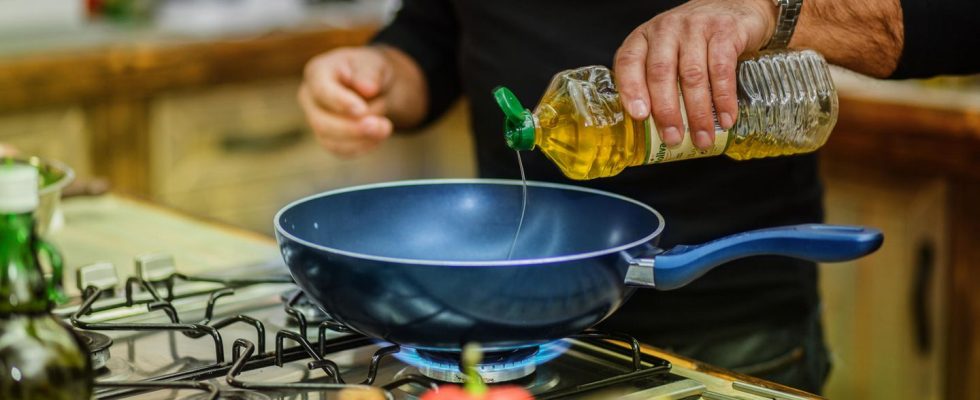Kitchen gadget
Splash guard for pans: This prevents grease stains and burns
With a splash guard for the pan you can protect yourself from grease stains while cooking.
© ineer / Getty Images
Who doesn’t know this: As soon as the oil in the pan has reached the right temperature, it begins to spray in all directions as soon as it comes into contact with meat or vegetables. With a suitable splash guard you can avoid annoying grease stains on your clothing – and prevent painful burns.
When frying fresh food, splashes of fat are particularly likely when they are still slightly moist – such as fresh meat or wet vegetables: They spread over the entire stove, show up on the tiles and even end up on the floor. This is not only annoying, but also dangerous: If the oil is heated too much, it can burn your skin if a splash lands on your bare arm, face or other exposed part of your body. To prevent this, the splash guard for the pan was invented.
Splash guards for pans: These solutions are available
1. Splash guard with mesh
He was the pioneer among his peers: A Splash guard Made of stainless steel (including handle), which is designed to catch hot oil and water splashes with the help of its fine-meshed net. The steam can continue to escape through the holes so that the food can be prepared as normal. The splash guard is dishwasher safe and therefore easy to clean. And if you have multiple pans, in this set Includes several sizes.
2. Splash guard with glass insert
This Splash guard for pans has no mesh, but is made of high-quality carbon steel with small air holes through which the steam can escape. The special thing about this model is the integrated glass insert, which makes it easier for you to monitor the degree of doneness of your food – without removing the splash guard. The lid can be placed on any standard pan using a handle.
3. Silicone splash guard
In addition to steel, silicone is also used to produce splash protection solutions – as is the case with this model the case is. In contrast to steel, the material is soft and therefore flexible, and the splash guard can also be cleaned in the dishwasher. But there is also a downer: silicone is not acid-proof. Accordingly, the material will wear out more quickly if you frequently fry acidic foods and use the splash guard. In the end, however, it remains a question of personal taste as to which material is preferred. However, metal splash guards are more durable.
4. Splash guard with air outlet elevations
This one is also suitable for all frying, braising and serving pans Stainless steel splash guard with special air outlet elevations so that condensation can escape: The special thing about this model is the integrated silicone edging that is placed all around the lid. This is to prevent hot splashes of fat from escaping around the edge of the pan. The model is also oven safe.
5. Metal splash guard
Also in this high quality Metal splash guard With a diameter of 31 centimeters there are small holes through which the water vapor can escape – otherwise your dishes would be cooked and therefore not crispy. The integrated non-stick coating means that grease splashes roll off the lid, making it easier to clean by hand or in the dishwasher (according to the manufacturer) after cooking.
Two alternatives to the classic splash guard
If you don’t have a splash guard for the pan at hand, there are two alternative options: Either you use a large pot lid, which catches the splashes (but also locks in the steam so that the fried food doesn’t become crispy) – or you use ordinary kitchen paper and place this over the edge of the pan. Preferably so that it doesn’t fall into the food. However, this method is not very sustainable and, with a gas stove, increases the risk of your kitchen paper catching fire or being scorched. For the reasons mentioned, a proper splash guard is the better choice.
You might also be interested in:
This article contains so-called affiliate links. Further information are available here.



